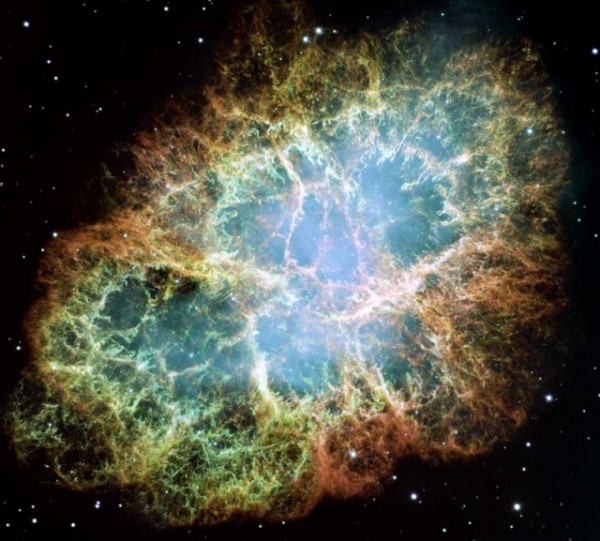By Ana Verayo, | February 09, 2016

The Crab nebula - Both supernova explosions and pulsars are potential sources of gravitational waves.
Astronomers and scientists could soon reveal real evidence of these mysterious gravitational waves which exist in ripples, spanning through spacetime, as first predicted by Albert Einstein in 1916, positing the famous theory of general relativity.
This new evidence will be announced during a press conference on Februrary 11, Thursday around 10:30 A.M. EST at the National Press Club in Washington D.C., which will discuss scientific efforts in searching for gravitational waves as it travels through space at the speed of light.
Like Us on Facebook
This official announcement will involve a "status report" about this ongoing search of scientists using the LIGO (Laser Interferometer Gravitational-Wave Observatory). This promising advisory could even lead to the revelation of a crucial discovery that is about to be unveiled on Thursday.
This media advisory has been fueled by a "rumor" that has been going on for the last several months about how scientists from LIGO have supposedly detected gravitational waves for the first time ever. Famous cosmologist, Lawrence Krauss from the Arizona State University revealed this "rumor" on social media last September and another tweet last January 11. Krauss is not part of the LIGO team.
Last week, theoretical physicist Cliff Burgess from the Perimeter Institute for Theoretical Physics in Ontario, also revealed some details about this circulating rumor via an email he sent to the McMaster physics department, where he indicated that LIGO sources have already detected real gravitational waves that was produced from a merger of two black holes. Burgess is also not part of the LIGO team.
Gravitational waves are generated by fast moving massive cosmic objects that are usually triggered by extremely violent or catastrophic events like supernova explosions and black holes that are in the process of merging. These can distort the fabric of spacetime as they are emanated outwards in the speed of light.
In the LIGO facility, there are two ultra sensitive detectors that can detect even the most minute movements or disturbances in spacetime that are caused by these gravitational waves, travelling toward Earth's direction.
The LIGO detector beams eject laser light down to its arms spanning 2.5 miles long which are all arranged in an L shape. When gravitational waves pass through this system, the laser beam can travel at a different distance by a minimum amount, similar to the diameter of an atom's nucleus. No matter how minute, LIGO is sensitive enough to pick up this difference, according to mission scientists.
When this announcement reveals direct evidence of gravitational waves for the first time ever, this can change the face of astronomy and cosmology revealing unseen cosmic events and mysteries that can reveal much about the nature of time and space itself.
Operated by MIT and the California Institute of Technology LIGO is funded by the U.S. National Science Foundation where mission scientists say that gravitational waves do not interact with visible matter unlike electromagnetic radiation, which means they travel across the universe for millions of light years in their most pure form, providing a never before seen view of the gravitational wave universe.
This new study will be published in the journal Nature.
-
Use of Coronavirus Pandemic Drones Raises Privacy Concerns: Drones Spread Fear, Local Officials Say

-
Coronavirus Hampers The Delivery Of Lockheed Martin F-35 Stealth Fighters For 2020

-
Instagram Speeds Up Plans to Add Account Memorialization Feature Due to COVID-19 Deaths

-
NASA: Perseverance Plans to Bring 'Mars Rock' to Earth in 2031

-
600 Dead And 3,000 In The Hospital as Iranians Believed Drinking High-Concentrations of Alcohol Can Cure The Coronavirus

-
600 Dead And 3,000 In The Hospital as Iranians Believed Drinking High-Concentrations of Alcohol Can Cure The Coronavirus

-
COVID-19: Doctors, Nurses Use Virtual Reality to Learn New Skills in Treating Coronavirus Patients







